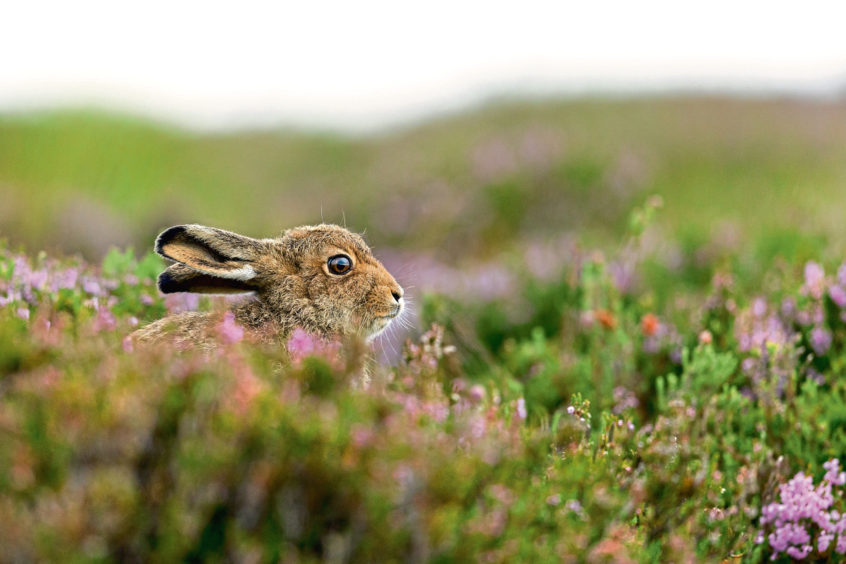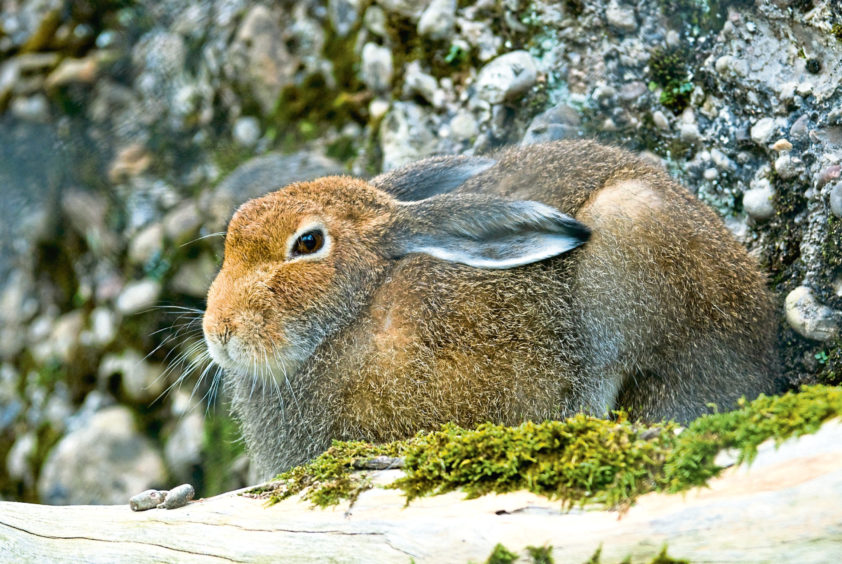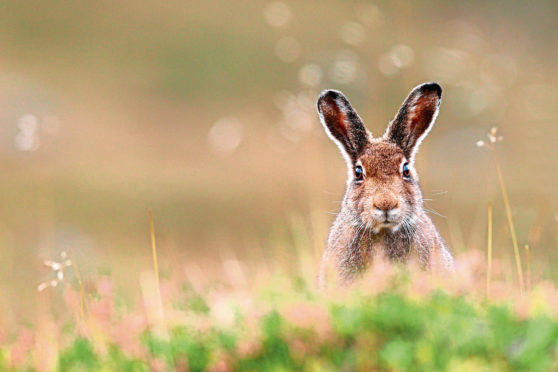I trod carefully across the boulder field on this high plateau in the southern Cairngorms, scanning the ground all the time in the hope of spotting a dotterel, a scarce plover that haunts such remote places.
Then, a long-eared head popped up before me, followed by another – mountain hares! They watched me warily, and I was unsure whether they would permit me to approach close or would instead lollop away under the power of their incredibly long hind legs. Individual mountain hares have different personalities, some are confiding and sit tight, others are skittish and flee at the slightest hint of danger.
I unslung my camera from my shoulder and managed a quick couple of shots, before the hares decided that caution was the better part of valour and took flight. Mountain hares are such special animals and these ones looked magnificent in their smoky-blue summer coats. In a few months’ time when winter takes hold, their fur will moult to white, providing seamless camouflage in the snowy expanses of the Cairngorms.
As they bounded away, I pondered how such beautiful animals could be the source of so much controversy. Until this year, up to 25,000 hares were thought to have been shot annually by grouse moor managers on the grounds they carry ticks and diseases which harm red grouse, and because they may damage tree saplings.

But to me this was no more than mindless mass-slaughter of one Scotland’s iconic animals, for they are part of the very soul of the mountain environment. Recent research has indicated that hare numbers have plummeted since the 1950s due to this large-scale unregulated culling, and as such, recent legislation to ban the unlicensed killing of mountain hares and make them a protected species is to be welcomed. A healthy landscape needs a natural balance between predators and prey, not an unnatural one controlled solely by the hand of humankind.

The two mountain hares were soon gone from sight, so I wandered on. From the corner of my eye I detected a subtle movement. It was a dotterel, which ran across the stony ground on pattering feet, stopping every so often, then moving on again. Dotterels exhibit unusual sexual role reversal where the male incubates the eggs and looks after the young. The female plays no role in caring the young, and she is also promiscuous, often mating with more than one male.
I decided not to approach the dotterel, as it would have chicks nearby, and I didn’t want to cause unnecessary angst. So, I retreated slowly, leaving this charismatic plover and its family in peace.
To the north, the high Cairngorm massif was etched against the horizon and I reeled off the names of their summits in my head; such familiar tops and each one the source of happy memories from the past in search of eagles, dotterel, ptarmigan, and snow buntings.
INFO:
Mountain hares feed mainly on heather and grasses, sedges, and rushes. They may have up to three litters a year, with 1 to 3 young in each one.










